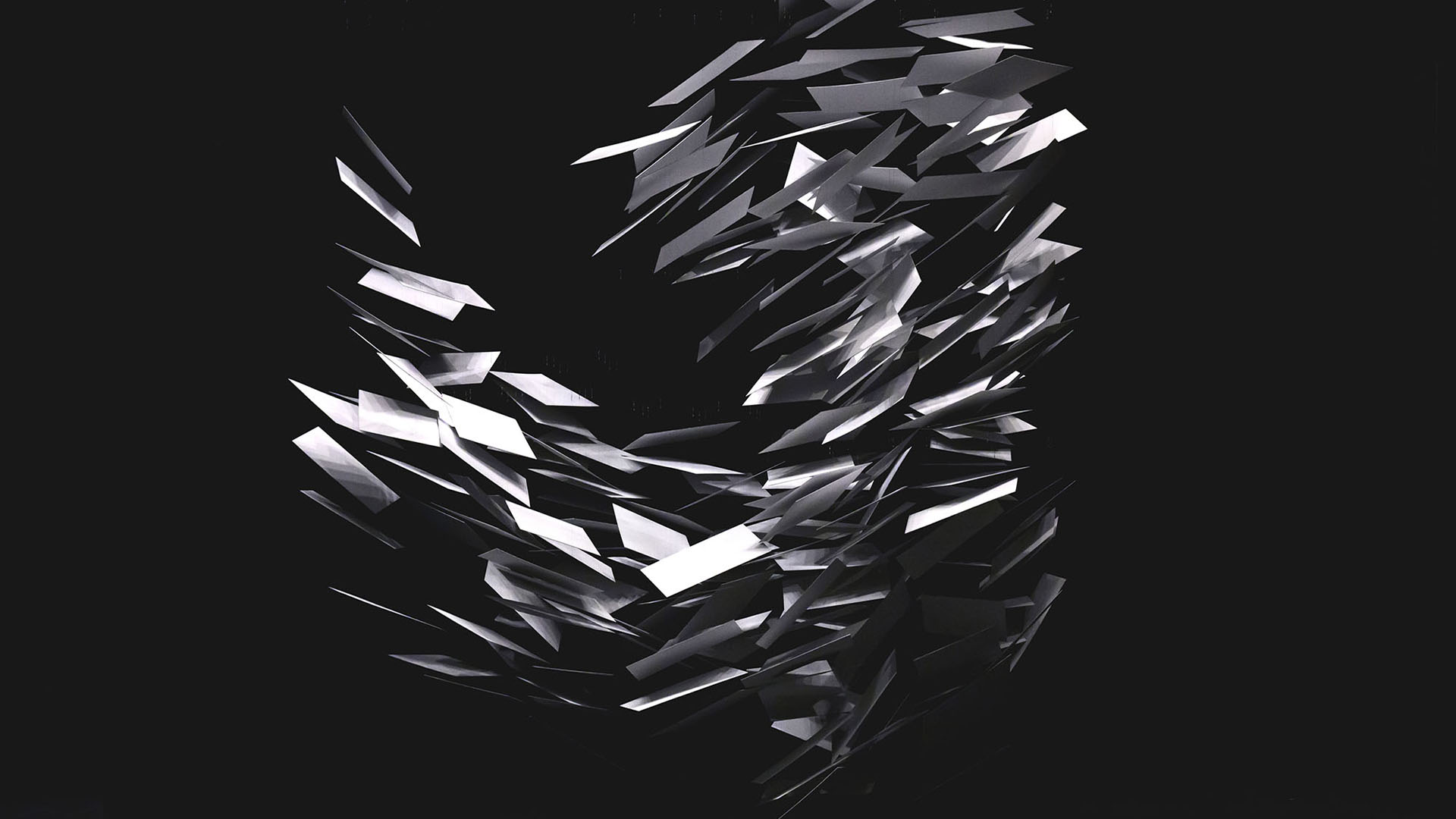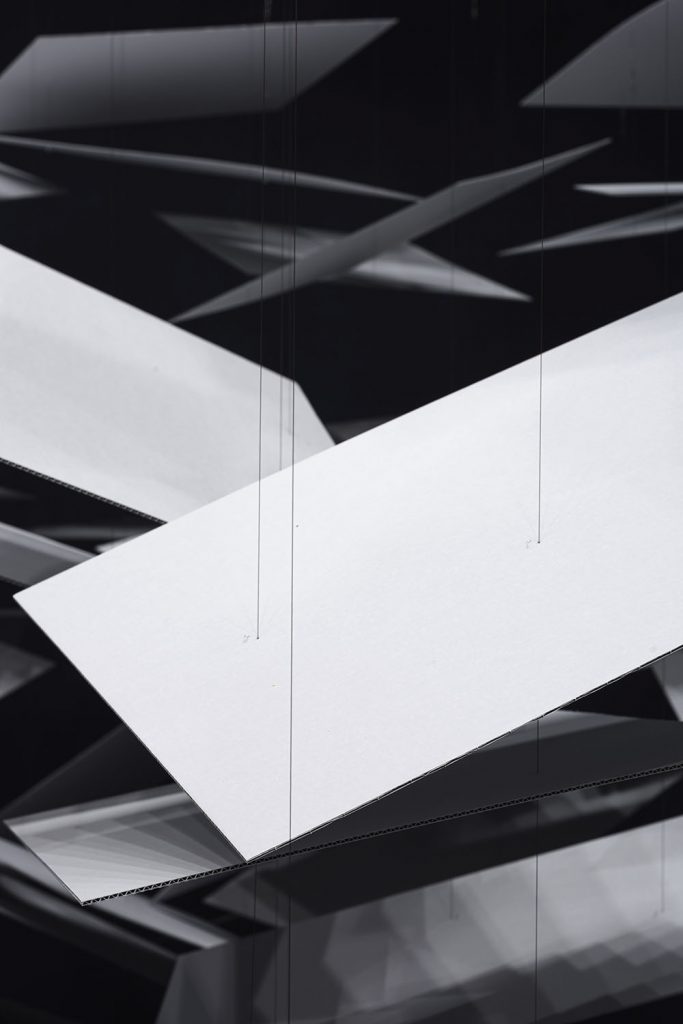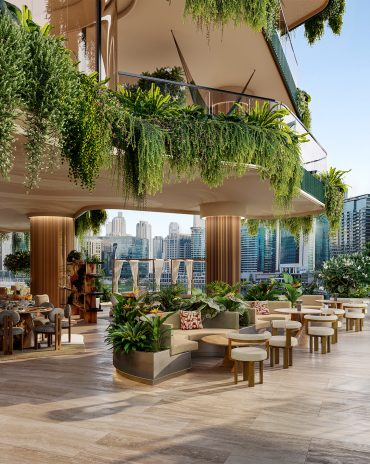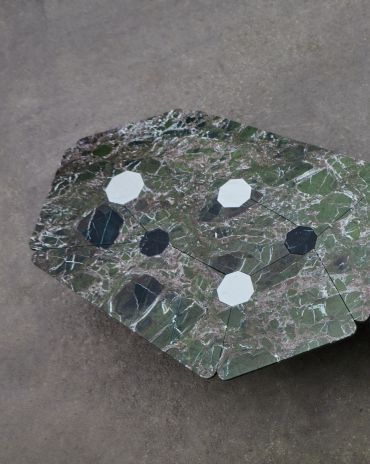Copyright © 2025 Motivate Media Group. All rights reserved.
Into the Space by NAKAMURA KAZUNOBU DESIGN-WORKS is an art space focused on expressions of Japanese beauty
This installation art space creates like cloud formations flow through the sky

Into the Space is an installation art space focused on expressions of Japanese beauty. Japanese dance performances were held at this location and, both before and after the performances, audiences were invited on stage to experience the installation.
In “Sakuteiki – Visions of the Japanese Garden” written in the Heian period (794-1185), it is said that the creation of space begins with “setting a stone,” by placing an object in an empty space. Also, Ikenobo Sen’o, a master of Japanese flower arranging in the early modern period, once said: “With a spray of flowers, a bit of water, one evokes the vastness of rivers and mountains.” A single object is used to evoke a vast landscape that does not actually exist in that location. When an object is placed in a space, a place is naturally created around it: a vast landscape evoked by a single organic form object. The belief is that a space created in this way is the ideal place that humans unconsciously seek.
Japan is an island nation that experiences a great deal of humidity. Throughout the year, various cloud formations flow through the sky. In Japan, clouds have been an important element of scenery since ancient times and have been written about in numerous poems. Fascinated by the beautiful, large, swirling holes that sometimes appear in those flowing clouds, the designer attempted to recreate them. Thin boards tilted in various directions catch the light and create shadows, and those shadows pile up irregularly to create darker shadows, indicating the volume of the clouds. It is a single organic form object and, around it, a blank space is created that invites people in. Visitors look up and face one being, like a cloud swirling as though a great wave.

One by one, hundreds of thin boards are drawn in 3D space by the designer, and finely adjusted to a structurally balanced position by cutting-edge computational design to form a single object. Fixed to the ceiling are ten steel mesh grid panels, 800 mm wide by 1600 mm long, from which countless thin threads hang down regularly along the grid. Each thin board, just 3 mm thick, is balanced in the air with three points pierced by its threads, and each board rests in the air in a defined shape. The thin boards are made of 100% virgin pulp material, which is also used in art storage boxes for strength and durability.
This object can be deployed in various spaces, creating different sceneries around it, depending on where it is placed. It has already been exhibited in two locations, and two more locations are being proposed. This way of thinking about space creation can be applied to the design of any space.
This work is an attempt to express the Japanese aesthetic sense of finding beauty in a single component of nature, such as a single flower, and then creating a space using such an organically shaped object.
Technical sheet
Installation Design: NAKAMURA KAZUNOBU DESIGN-WORKS/Kazunobu Nakamura
Dancer: Egiku Hanayagi, Keijirou Wakayagi
Japanese flute: Michiko Fukuhara
Sound crew: Yasuo Kawata
Lighting-design: Theaterbrain/Masao Igarashi
Production: Tashibu to Fukushima
Stage director: Noriyuki Shirato
Photograph: Masaki Komatsu
Material: Reinforced corrugated board (3 mm thick, 540 x 720 mm) made from 100% virgin pulp, steel mesh wire mesh panels (wire diameter 5.0 mm, 200 mm grid, 800 mm x 1600 mm), fine polyethylene fibre thread
The Latest
Saving Our Planet Through Regenerative Architecture
Eywa Tree of Life is designed to harmonise with nature, restore surrounding ecosystems, and support human health and longevity.
A Home Away from Home
This home, designed by Blush International at the Atlantis The Royal Residences, perfectly balances practicality and beauty
Design Take: China Tang Dubai
Heritage aesthetics redefined through scale, texture, and vision.
Dubai Design Week: A Retrospective
The identity team were actively involved in Dubai Design Week and Downtown Design, capturing collaborations and taking part in key dialogues with the industry. Here’s an overview.
Highlights of Cairo Design Week 2025
Art, architecture, and culture shaped up this year's Cairo Design Week.
A Modern Haven
Sophie Paterson Interiors brings a refined, contemporary sensibility to a family home in Oman, blending soft luxury with subtle nods to local heritage
Past Reveals Future
Maison&Objet Paris returns from 15 to 19 January 2026 under the banner of excellence and savoir-faire
Sensory Design
Designed by Wangan Studio, this avant-garde space, dedicated to care, feels like a contemporary art gallery
Winner’s Panel with IF Hub
identity gathered for a conversation on 'The Art of Design - Curation and Storytelling'.
Building Spaces That Endure
identity hosted a panel in collaboration with GROHE.
Asterite by Roula Salamoun
Capturing a moment of natural order, Asterite gathers elemental fragments into a grounded formation.
Maison Aimée Opens Its New Flagship Showroom
The Dubai-based design house opens its new showroom at the Kia building in Al Quoz.
















